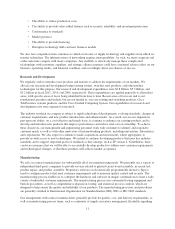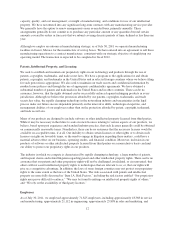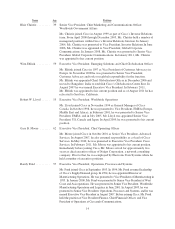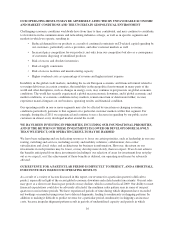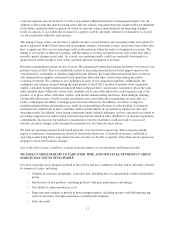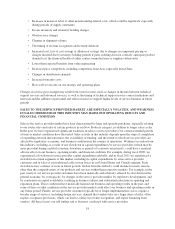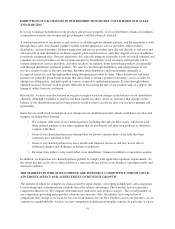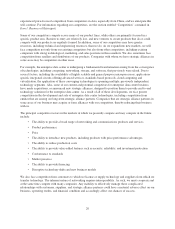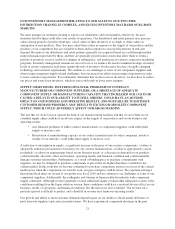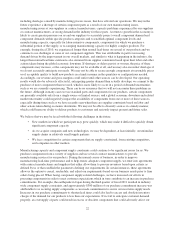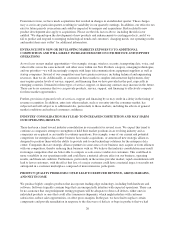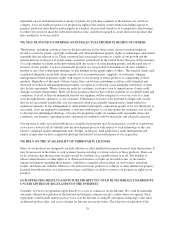Cisco 2011 Annual Report Download - page 28
Download and view the complete annual report
Please find page 28 of the 2011 Cisco annual report below. You can navigate through the pages in the report by either clicking on the pages listed below, or by using the keyword search tool below to find specific information within the annual report.experienced price-focused competition from competitors in Asia, especially from China, and we anticipate this
will continue. For information regarding our competitors, see the section entitled “Competition” contained in
Item 1. Business of this report.
Some of our competitors compete across many of our product lines, while others are primarily focused in a
specific product area. Barriers to entry are relatively low, and new ventures to create products that do or could
compete with our products are regularly formed. In addition, some of our competitors may have greater
resources, including technical and engineering resources, than we do. As we expand into new markets, we will
face competition not only from our existing competitors but also from other competitors, including existing
companies with strong technological, marketing, and sales positions in those markets. We also sometimes face
competition from resellers and distributors of our products. Companies with whom we have strategic alliances in
some areas may be competitors in other areas.
For example, the enterprise data center is undergoing a fundamental transformation arising from the convergence
of technologies, including computing, networking, storage, and software, that previously were siloed. Due to
several factors, including the availability of highly scalable and general purpose microprocessors, application-
specific integrated circuits offering advanced services, standards based protocols, cloud computing and
virtualization, the application of these converging technologies is spanning multiple, previously independent,
technology segments. Also, some of our current and potential competitors for enterprise data center business
have made acquisitions, or announced new strategic alliances, designed to position them to provide end-to-end
technology solutions for the enterprise data center. As a result of all of these developments, we face greater
competition in the development and sale of enterprise data center technologies, including competition from
entities that are among our long-term strategic alliance partners. Companies that are strategic alliance partners in
some areas of our business may acquire or form alliances with our competitors, thereby reducing their business
with us.
The principal competitive factors in the markets in which we presently compete and may compete in the future
include:
• The ability to provide a broad range of networking and communications products and services
• Product performance
• Price
• The ability to introduce new products, including products with price-performance advantages
• The ability to reduce production costs
• The ability to provide value-added features such as security, reliability, and investment protection
• Conformance to standards
• Market presence
• The ability to provide financing
• Disruptive technology shifts and new business models
We also face competition from customers to which we license or supply technology and suppliers from which we
transfer technology. The inherent nature of networking requires interoperability. As such, we must cooperate and
at the same time compete with many companies. Any inability to effectively manage these complicated
relationships with customers, suppliers, and strategic alliance partners could have a material adverse effect on our
business, operating results, and financial condition and accordingly affect our chances of success.
20



